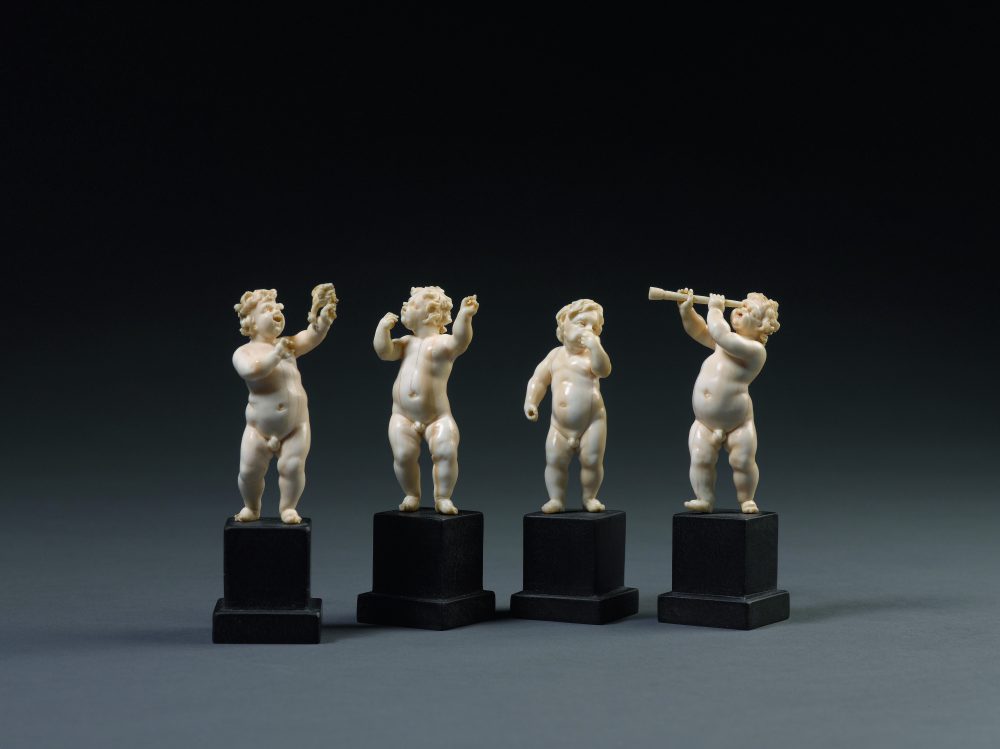
Vier Knäblein aus einer Gruppe von Allegorien der fünf Sinne, 1690/1700 Balthasar Permoser (Kammer b. Traunstein 1651 – 1732 Dresden) zugeschrieben Elfenbein Sammlung Würth, Inv. 16738 Foto: Blumka Gallery, New York
The appeal of most of the small artefacts from the golden age of the princely “cabinets of curiosities” has always lain in the sheer inventiveness and artistic virtuosity of their creators. The combination of natural and artistic forms was popular; rare and costly items from the natural world were transformed into amazing new creations – such as the precious nautilus shell, shaped into a splendid goblet.
The exhibition shows predominantly 17th-century works in alabaster, amber, boxwood, ivory, horn and silver. On display, besides imaginatively ornamented goblets and drinking-vessels, are carved allegorical, mythical and biblical figures fashioned by distinguished sculptors of the age, such as Leonhard Kern, Georg Petel and Matthias Steinl. One of the outstanding exhibits is a magnificent cabinet with the finest intarsia.
Aristocratic collectors kept such masterpieces in “cabinets of curiosities”, like that of the Salzburg prince-archbishops. In addition to viewing the exquisite objets d’art of the Würth Collection in the south arcade, visitors to the DomQuartier will experience the historical ambience of a 17th-century cabinet of curiosities.
Vier Knäblein aus einer Gruppe von Allegorien der fünf Sinne, 1690/1700
Balthasar Permoser (Kammer b. Traunstein 1651 – 1732 Dresden) zugeschrieben
Elfenbein, Sammlung Würth, Inv. 16738
Picture: Blumka Gallery, New York

